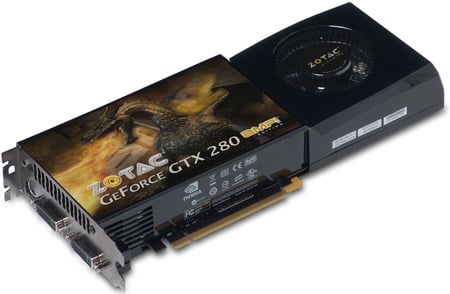In our email about this preview AMD asked for us to "keep this high level and not go deep on the architecture" since they were "leaving something for the full NDA" at a later date. Hmmm....okay how's this:
- Two GPUs
- One board
- Radeon HD 4870 cores
- PCIe v1.1 bridge chip
- GDDR5 memory
- HD 4870 clock speeds
- 512MB buffer to each GPU for 1GB total
- 1x8-pin PCIe and 1x6-pin PCIe power connectors
- Remember the HD 3870 X2 design? Yeah, pretty much like that.

The card continues in the tradition of long PCBs, matching the size of the HD 3870 X2 as well as the 9800 GX2 and 9800 GTX designs. The cooler for the Radeon HD 4870 X2 is of course a two slot design.

Let's see some performance numbers from this new card:




Since this is a preview of the Radeon HD 4870 X2 1GB card, AMD didn't want us to talk about pricing, availability or anything relating to their business strategy for the card. However, in some slides that they had already released to us during the RV770 launch we learned that the R700 should be coming in mid-Q3 and will have a ">$500" price point. That puts the card to be on shelves by the end of August with a price over $500 - considering the NVIDIA GeForce GTX 280 1GB cards just dropped to $499 literally weeks after their release, NVIDIA is aware of the performance of the card as well.



